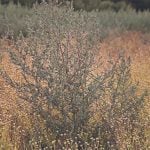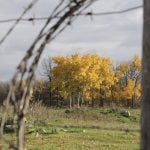If there was a tool available for Canadian cattle feeders to improve both weight gain and disease resistance, what would it be worth to implement? What if that tool was as simple as deworming cattle on arrival?
As simple as deworming is, not every feedyard opts to do it. Whether the perception is that feedlot cattle won’t be affected by internal parasites once they are off grass, or that Canadian winters kill most parasites, deworming isn’t a practice that is embraced for health and production gains the way vaccination and treatment on arrival are. While cattle have an extremely low risk of being infected with internal parasites in a feedlot, that doesn’t protect them from the burden they acquired on pasture before arrival.
Additionally, despite cold winters, infective larvae can burrow deeply into the soil to avoid freezing. They will also live alongside adult worms in the stomachs of cattle. These overwintering populations of internal parasites contribute to a re-colonization of pasture each grazing season that can have substantial impacts on naive cattle.
Read Also

Canadian Beef Check-Off Agency reports on investments and activities
The check-off agency’s work behind the scenes is what ensures cattle check-off dollars are invested wisely, accounted for transparently and deliver measurable value back to producers and importers.
Rounding up roundworms
In a 2007 North American study, deworming stocker cattle had a greater economic impact than growth-promoting implants, ionophores or in-feed antibiotics. In feedlot cattle, deworming had a similarly large benefit, second only to growth-promoting implants. In yearling cattle, infestation with Cooperia, a roundworm, reduced weight gain by 7.4 per cent.
It’s worth thinking about what kinds of parasites we are concerned about in feeders in Canada in the fall. The average 500- to 900-lb. yearling coming off grass has been exposed to internal parasites all summer and has minimal immunity to them. The parasite burden of a pasture depends on the stocking density, the environment and grazing strategies. Areas with moderate to high spring and summer rainfall and pastures grazed continuously or rotationally are havens for cattle roundworms.
The main internal parasites of cattle in Canada are roundworms — Cooperia, Ostertagia, and Nematodirus — and tapeworms. These worms reduce weight gain in calves on pasture and feeders in yards. Other less common internal parasites are flukes and cattle grubs. Flukes are regional, prevalent in wetter areas where they are transmitted by semi-aquatic snails, and found around the Great Lakes, Manitoba and the foothills of the Rocky Mountains. Flukes migrate through the liver and can cause liver condemnation, or in more serious cases, predispose cattle to Clostridium haemolyticum, or redwater disease.
Limitations of pour-on
What if you are deworming on arrival? The method of deworming you use could substantially affect the efficacy. While convenient and cheap, pour-on dewormer products are less effective at eliminating worm burdens than injectables. Pour-on dewormer doesn’t reach the same therapeutic levels in the blood and fails to maintain blood levels for as long as injectables do.
Dewormers, much like antimicrobials, need to be used judiciously. Continuous use of dewormer products has facilitated resistance. The more often dewormers are used to eliminate all susceptible parasites, the more resistant parasite populations are created. Though only speculative, the widespread use of less effective products such as pour-ons could contribute to increasing resistance. To reduce the likelihood of developing a resistant population, new guidelines encourage the use of two deworming products at once, each from a different drug class. An example is using an injectable such as doramectin, eprinomectin, or Ivomectin (a macrocyclic lactone) with a premix or oral drench like fenbendazole or albendazole (benzimidazoles).
Lice control
Unlike internal parasites, it is more obvious when feedlot cattle are afflicted with a lice infestation. Lice aren’t effectively treated if pour-on occurs early in the fall before temperatures drop sufficiently. Unless cattle are being dewormed on arrival in the late fall, lice treatment will need to occur when cattle are handled again. Ideally, this would happen shortly after their winter coats are in full bloom and before cattle start rubbing their hair off in the deep of winter in January.
A pour-on macrocyclic lactone may be effective still for many yards but reports of lice resistance to this dewormer class are spreading. Additionally, the use of a macrocyclic lactone in cattle after October runs the risk of inducing a severe inflammatory reaction in cattle infected with cattle grubs. The risk is small, as cattle grubs are uncommon in most parts of Canada now. However, the death of the larvae, which overwinter in either the epidural fat or connective tissue around the esophagus, can create an inflammatory reaction big enough to cause partial paralysis or bloat. A pour-on product from the pyrethroid drug class, such as cyfluthrin, is a more reliable option for lice.
For effective use of all dewormers, success comes down to choosing the right products at the right time.
















